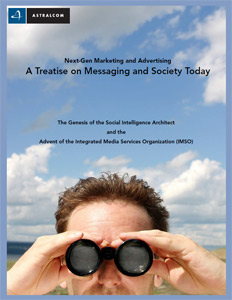For each percentage point that traditional advertising declines, inversely, search engine advertising gains.
Why? Because everyone uses a search engine to find something. From books and music to restaurants, hotels, entertainment – you name it. In today’s business environment it pays to be found when consumers are looking.
According to comScore, the search market share, as of December 2013, is divided as follows: Google with 67.3%; Bing with 18.2% and Yahoo with 10.8%.
Conversely, on June 15th 2010, the Wall Street Journal reported that “The Internet is poised to overtake newspapers as the second-largest U.S. advertising medium by revenue behind television….Newspapers, meanwhile, continue to suffer from a decline in advertising revenue. According to numbers released by the Newspaper Association of America earlier this year, print advertising revenue dropped 28.6% in 2009 to $24.82 billion.”
It truly makes sense when you think about how often you search on Google, Yahoo or Bing for the things that you want and need. People just like you are searching, too. People are searching from their desktop computers. People are searching from their mobile devices. People are searching from their GPS devices – looking for you.
As a marketer or business owner, doesn’t it make sense that your goods and services should be found when other people are looking for them?
Let’s take a moment to define search engine advertising.
Mostly, search engine marketing (SEM) is an umbrella term for all sorts of search engine strategies and tactics. There are reciprocal link strategies, search engine optimization (SEO) and social media optimization (SMO) strategies. There are organic, local, micro-local and mobile search tactics and there are content targeted and contextual search advertising tactics. That’s just to name the basics.
Along with these various search marketing and advertising efforts, remember; there are three major search engines that are indexing all these various tactics and strategies being applied by businesses just like yours, connecting with customers and leading them to their websites.
You can easily see that search advertising is an actively growing area that helps people find businesses and that helps businesses find people. In fact, right now, at this point in time, consumers have more ways and means to find you than ever before – but where do you begin?
The answer to that question depends on several factors, including the type of goods or services your business offers, your target audience and where and how your customers look for you.
Today, we’ll look at the single most effective and instantaneous method for getting in front customers and being found – Paid search engine advertising.
Paid search advertising enables businesses to compete on the first page of Google, Yahoo and Bing search results, based on keyword searches related to your product or service. So, for example, let’s say that your business rents boats, jet-skis or other watercraft. Knowing that search advertising is based on keywords related to your business, you would choose search words like boat rentals and jet ski rentals, or watercraft, sight seeing; and perhaps harbor cruise to use in your search campaign. Then, people that use these terms to search will find your paid search listing, click it and go right to your website.
In a nutshell, that’s pretty much how it works.
Yet, make no mistake; search engine advertising is not like traditional print advertising. See, typically, in traditional print advertising, an advertisement is created and then placed for distribution to the magazine or newspaper’s audience, or reach. In this traditional model, you are paying for the reach or distribution that is controlled by the magazine, newspaper or other medium. Once the ad is placed, that’s pretty much it.
There is an old adage in advertising that retailing tycoon John Wanamaker once said, “I know that half of my advertising doesn’t work.The problem is, I don’t know which half.”
With search engine advertising, that’s not the case. Search advertising is measurable down to the penny and it’s easier to gauge the effectiveness of digital advertising strategies, mediums and platforms.
Of course, search engine advertising does take frequent maintenance, tweaking and adjusting because competing businesses are all vying for the same 10 or so ad positions available for display in the search engines’ page-1 results.
Remember, too, that when you advertise in search engines, you are only paying for each time someone clicks on your listing or advertisement. Ad views, or impressions as they are called, don’t cost a cent. Because there are no ink, printing, postage and distribution costs typically associated with traditional advertising, search advertising is less costly and more targeted – and it’s better for the environment.
Learn more by requesting ASTRALCOM’s whitepaper, “The Genesis of the Social Intelligence Architect and the Advent of Integrated Media Services Organization (IMSO)”, here.


